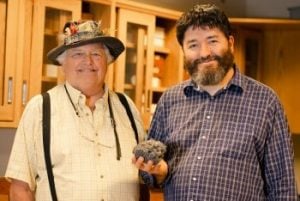
Rudiger Escobar-Wolf (GMES/EPSSI) is Principal Investigator on a project that has received a $294,662 research and development grant from the National Science Foundation. The project is titled “Collaborative Research: Lahar Dynamics and Monitoring: A Multiparametric Approach Grounded in Infrasound.” This is a potential three-year project.
By Sponsored Programs.
Extract
Lahars, or volcanic mud flows, produce infrasound (low-frequency acoustic energy) that can be detected from distances of many kilometers. As such, it is possible to remotely characterize these hazardous mud flows by tracking their flow positions and energetics through time.
This work seeks to develop infrasound analytical tools to locate where lahars initiate, how far and fast they move, and estimate their mass flow.
Toward these goals the project will deploy and maintain seismic and infrasonic instruments at Fuego Volcano (Guatemala), where lahars are common during the rainy season (April through September). Rain gauges and time lapse cameras will be installed at locations along the lahar paths to understand how lahars initiate and to validate flow characteristics through direct observation.
This award is cofunded by the PredicMon of and Resilience against Extreme Events (PREEVENTS) program.